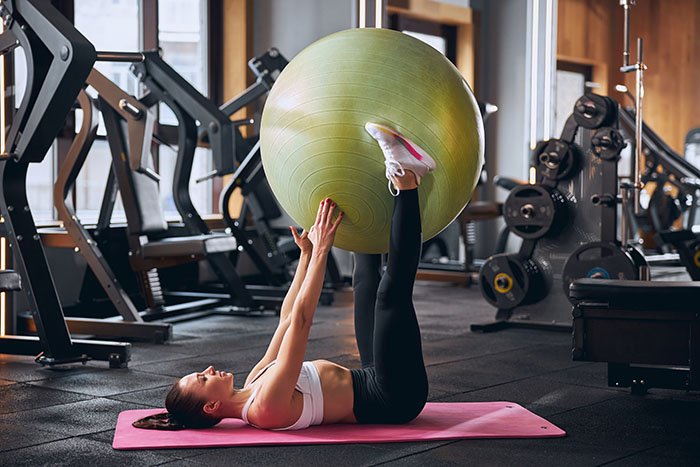 GETTY IMAGES
GETTY IMAGES
One is a holistic discipline originating from ancient India, the other a specific physical system devised by a German anatomist in the early 20th century: while there might be a lot of cross-over between yoga and Pilates, the two are inherently very different.
As practices today, yoga and Pilates are both celebrated for their numerous health benefits, from offering connection to the body and stress relief, to developing flexibility, strength, control and endurance. There are countless interpretations of both disciplines (and one person’s balance class is another person’s cardio) but what links them both is breath work.
Put simply, “the biggest difference between the two,” Jill Simpson, founder of yoga, Pilates, ballet and barre studio Ebb&Flow explains, “is the emphasis on the spiritual side in yoga classes.”
Zoe Bertali, yoga teacher at studio The Refinery elaborates: “Yoga is an integrated health management system using breath, movement and meditation to unite mind, body and spirit. It also incorporates elements of philosophy, science and an ethical way of living. Classes can range from gentle and nourishing to challenging and sweaty.” Indeed, there’s a yoga class for everyone out there; from the various more traditional forms like Hatha and Ashtanga to the creative interpretations such as anti-gravity yoga and laughter yoga.
Nahid de Belgeonne, somatic movement and yoga coach, highlights that, while modern yoga in the West has become largely about movement, the practice has much deeper roots. “Yoga is a spiritual philosophy: the physical practice makes up only one of the eight parts ( or limbs) of the yoga path. The other ‘limbs’ are ethical standards, self discipline, breath, sensory transcendence, focus, meditation and a bliss state where you transcend the self. The last four limbs are involved in meditation.”
THE ORIGINS OF PILATES
“Pilates was created by Joseph Pilates who was an anatomist and a mechanical genius,” Bertali says. “It is a physical system that uses very specific targeted exercises to improve strength, flexibility and posture with particular focus on the core. It is a disciplined practice that needs to be done on a regular basis to provide benefit”.
There tends to be fewer wild variations of Pilates teachings, with traditionalists favouring mat classes and those seeking more fitness-focused workouts opting for classes on resistance-based reformer machines. Classical Pilates, which marries mat work with a whole host of Pilates apparatus, is considered to be the practice in its truest form.
THE PHYSICAL BENEFITS
If you’re looking to develop core strength and balance, when practised regularly yoga and Pilates are both ideal exercises for this. Given that many of the poses in yoga and exercises in Pilates involve supporting your body weight, they also work various muscles all over your body.
Generally, Pilates is a disciplined practice that requires small movements focusing on various areas of the body. Simpson says that while Pilates students primarily work on core strength (as noted above), they reap “added benefits of muscle toning, overall strength, body control, and flexibility”.
Bertali adds that “if you like a more structured workout without the cardio component, this could be the workout for you.”
She also notes that yoga can help increase strength and flexibility through muscles and joints. “In active, fast-paced classes you are likely to build a lot of heat in the body which has a great regenerative effect” and, of course, you will burn calories.”
“In slower practices such as Yin yoga, where you hold the postures for longer, you begin to work on stretching and moving the fascia which is the deeper connective tissue around the muscles and joints, which ultimately helps with flexibility.”This content is imported from Instagram. You may be able to find the same content in another format, or you may be able to find more information, at their web site.
Source: https://www.harpersbazaar.com/
